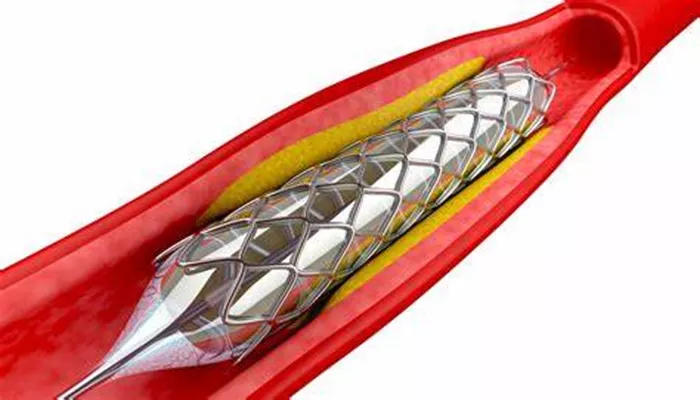Cardiovascular disease remains one of the leading causes of death globally. A significant contributor to this issue is the blockage of arteries, which can lead to serious health complications, including heart attacks and strokes. Understanding which arteries are most likely to become blocked is essential for prevention and treatment.
This article will explore the major arteries prone to blockage, the factors contributing to these blockages, and the implications for overall health. By simplifying complex medical concepts, we aim to provide valuable information that can help individuals take proactive steps toward heart health.
Major Arteries Prone to Blockage
1. Coronary Arteries
The coronary arteries are the blood vessels that supply blood to the heart muscle itself. They are crucial for maintaining a healthy heart. The main coronary arteries include:
Left Main Coronary Artery (LMCA): This artery branches into the left anterior descending artery (LAD) and the circumflex artery. Blockage here can lead to severe complications, as it supplies a significant portion of the heart muscle.
Left Anterior Descending Artery (LAD): Often referred to as the “widowmaker,” blockage in the LAD can result in a large area of the heart being deprived of oxygen, leading to a heart attack.
Right Coronary Artery (RCA): This artery supplies blood to the right side of the heart. Blockage can lead to arrhythmias and other complications.
Blockages in the coronary arteries are often due to atherosclerosis, a condition where fatty deposits (plaques) build up on the artery walls, narrowing them and restricting blood flow.
SEE ALSO: What Can You Do to Reduce Plaque Buildup in Arteries?
2. Carotid Arteries
The carotid arteries are located in the neck and are responsible for supplying blood to the brain. Each side of the neck has a common carotid artery that branches into internal and external carotid arteries. Blockage in these arteries can result in transient ischemic attacks (TIAs) or strokes.
The primary causes of carotid artery blockage include:
Atherosclerosis: Similar to coronary arteries, fatty deposits can form, leading to narrowing and potential blockage.
Thrombosis: The formation of a blood clot within the carotid artery can obstruct blood flow, increasing the risk of a stroke.
Regular monitoring and preventive measures, such as lifestyle changes, can help manage the risk of carotid artery blockage.
3. Peripheral Arteries
Peripheral artery disease (PAD) affects arteries outside of the heart and brain, primarily in the legs. The most commonly affected arteries include:
Femoral Artery: This artery runs down the thigh. Blockages can cause pain during physical activity (claudication) and may lead to critical limb ischemia.
Popliteal Artery: Located behind the knee, blockage here can further decrease blood flow to the lower leg and foot.
Tibial Arteries: These arteries supply blood to the lower leg and foot. Blockages can result in severe complications, including ulcers and gangrene.
PAD is primarily caused by atherosclerosis and can significantly impact mobility and quality of life.
Factors Contributing to Arterial Blockage
Understanding the factors that contribute to arterial blockages is vital for prevention. Here are some key factors:
1. High Cholesterol Levels
Elevated levels of low-density lipoprotein (LDL) cholesterol can lead to plaque formation in arteries. Regular screening and management of cholesterol levels are essential for reducing the risk of blockages.
2. High Blood Pressure
Hypertension can damage the arteries over time, making them more susceptible to plaque buildup. Managing blood pressure through lifestyle changes and medications is crucial.
3. Smoking
Smoking is a significant risk factor for cardiovascular disease. It accelerates the development of atherosclerosis and increases the likelihood of arterial blockages.
4. Diabetes
Diabetes can lead to high blood sugar levels, which can damage blood vessels and promote the formation of plaques. Proper management of diabetes is essential for heart health.
5. Sedentary Lifestyle
Lack of physical activity can contribute to obesity and other risk factors for arterial blockage. Regular exercise is essential for maintaining healthy arteries.
6. Unhealthy Diet
A diet high in saturated fats, trans fats, and cholesterol can contribute to arterial blockage. Emphasizing fruits, vegetables, whole grains, and lean proteins can help reduce this risk.
Implications of Arterial Blockage
Blockage of arteries can have severe implications for overall health. Here are some potential consequences:
1. Heart Attack
Blockage in coronary arteries can restrict blood flow to the heart muscle, resulting in a heart attack. Symptoms may include chest pain, shortness of breath, and fatigue.
2. Stroke
Carotid artery blockage can lead to a stroke, which occurs when blood flow to the brain is interrupted. Symptoms can include sudden numbness, confusion, and difficulty speaking.
3. Peripheral Vascular Disease
Blockages in peripheral arteries can lead to pain, ulcers, or even gangrene in the limbs. Severe cases may require surgical intervention or amputation.
Prevention And Management
Preventing arterial blockages involves a combination of lifestyle changes and medical management. Here are some effective strategies:
1. Regular Check-ups
Routine health check-ups can help identify risk factors early. Regular monitoring of blood pressure, cholesterol levels, and blood sugar is essential.
2. Healthy Diet
Adopting a heart-healthy diet can significantly reduce the risk of arterial blockage. Focus on foods rich in fiber, omega-3 fatty acids, and antioxidants.
3. Regular Exercise
Aim for at least 150 minutes of moderate-intensity aerobic exercise each week. Physical activity can help maintain a healthy weight and lower cholesterol levels.
4. Smoking Cessation
Quitting smoking is one of the most effective ways to reduce the risk of arterial blockage. Numerous resources are available to support individuals in quitting.
5. Medications
For individuals at high risk, medications such as statins, blood thinners, or antihypertensives may be prescribed to manage cholesterol levels, blood pressure, and reduce the risk of clot formation.
Conclusion
Understanding which arteries are most likely to get blocked is vital for managing cardiovascular health. The coronary arteries, carotid arteries, and peripheral arteries are key areas of concern. By recognizing the risk factors and adopting preventive measures, individuals can take significant steps toward reducing their risk of arterial blockage and its serious consequences.
Related topics:

